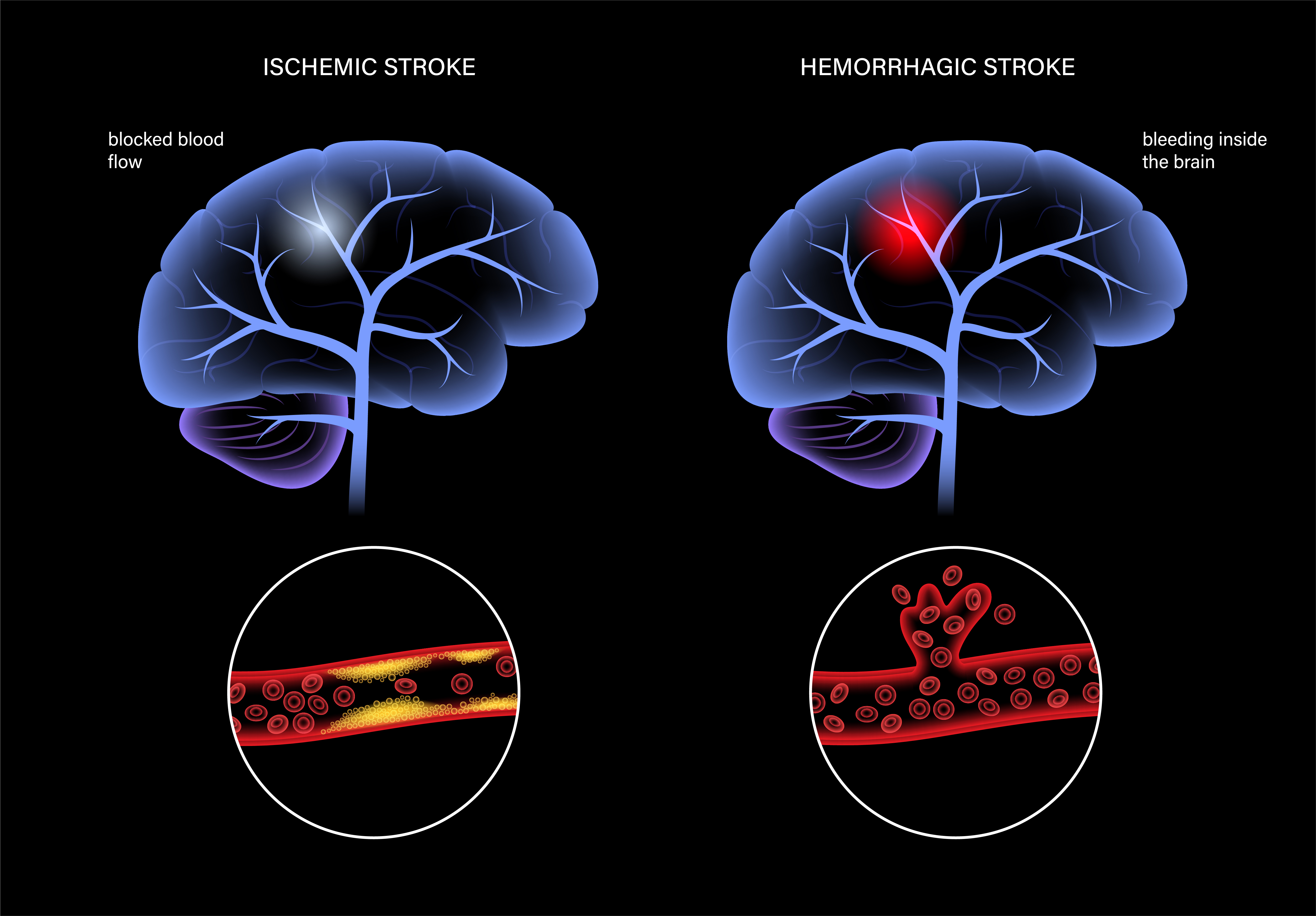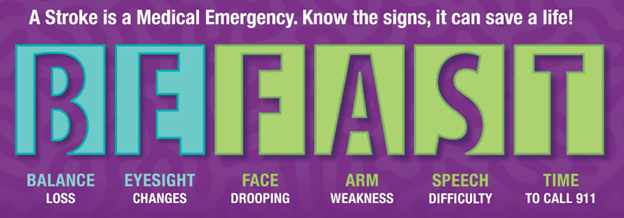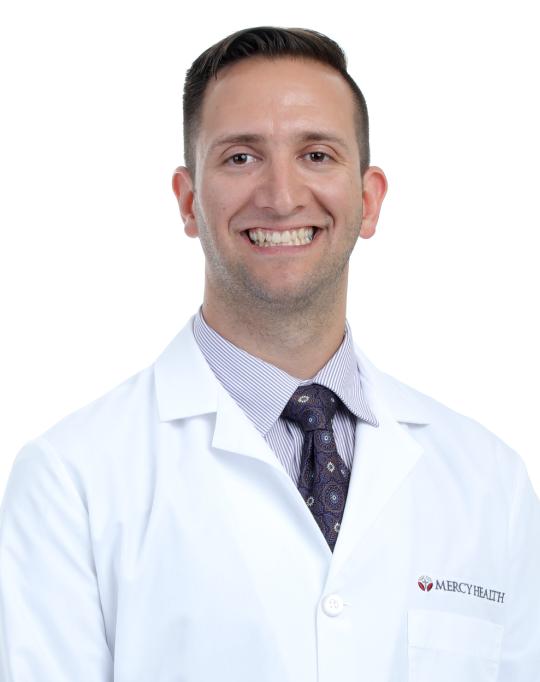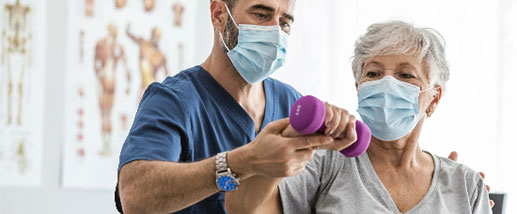Causes and Signs of Stroke
May 4, 2023
Defining “Stroke”
To distinguish a stroke from a heart attack, some people refer to a stroke as a “brain attack”.. A stroke is also known as a silent killer.
 A stroke occurs when a blockage prevents blood flow to portions of the brain, starving it of oxygen. A stroke also occurs if there is a hemorrhage in an artery in the brain and blood flows where it shouldn’t, damaging brain cells. In both cases, the affected brain cells die rapidly.
A stroke occurs when a blockage prevents blood flow to portions of the brain, starving it of oxygen. A stroke also occurs if there is a hemorrhage in an artery in the brain and blood flows where it shouldn’t, damaging brain cells. In both cases, the affected brain cells die rapidly.
There are two types of stroke:
- Ischemic stroke, when there is a blockage — lack of blood flow — in the blood vessels to the brain.
- Hemorrhagic stroke, when an artery carrying blood in the brain leaks or ruptures.
Common Causes and Risk Factors of Stroke
“High blood pressure (HBP) is the most common reason for a stroke, and it also increases the likelihood of coronary heart disease and heart failure,” said Patrick Pavwoski, DO, neurologist, Trinity Health Medical Group. “It is vitally important for each person to know their blood pressure and to check with a primary care provider if it is high. Normal blood pressure is 120/80 mm Hg. HBP affects the arteries, heart, kidneys, eyes, and brain.”
Risks for a stroke can be divided into unchangeable and treatable/controllable risk factors.
Treatable/Controllable Risk Factors for stroke are:
- High blood pressure
- Smoking/Vaping
- Overweight or obesity
- High cholesterol
- Diabetes
- Lack of exercise
- Poor diet
- High alcohol consumption
Unchangeable Risk Factors for stroke are:
- Racial/Ethnic Groups: About 55% of Black adults have HBP. Latino and South Asian people are also at higher risk than the general population.
- Age/Sex: The older you are, the greater risk of a stroke. Before age 65, men have a higher risk. After age 65, women have a higher risk.
- Family history of stroke, diabetes, or heart attack.
 Signs of Stroke
Signs of Stroke
The acronym B.E. F.A.S.T. is a smart way to remember how to identify a stroke. Remember, you do not need to have all of these signs to be having a stroke – all it takes is one or more of these symptoms.
B: The person is suddenly having balance issues.
E: The person’s eyesight changes. There is double vision or vision loss in one eye.
F: The person’s face droops on one side.
A: The person suddenly experiences weakness in the arm.
S: Slurred speech is a common sign of stroke.
T: With one or more of these symptoms, it’s time to call 911.
 “Stroke isn’t like a heart attack,” said Dr. Pavwoski. “If you have common symptoms of a heart attack — such as severe pain in your chest or arm — you will go to the hospital. With a stroke, you don’t have pain. Your brain tricks you into thinking nothing is wrong. Even when people have stroke symptoms, they often wait to go to the hospital.”
“Stroke isn’t like a heart attack,” said Dr. Pavwoski. “If you have common symptoms of a heart attack — such as severe pain in your chest or arm — you will go to the hospital. With a stroke, you don’t have pain. Your brain tricks you into thinking nothing is wrong. Even when people have stroke symptoms, they often wait to go to the hospital.”
“I’ve had patients say they woke up one morning and had balance problems but thought they could walk it off. One patient said that all day she couldn’t pick up her water bottle. She thought she was tired and would wait to see if it got better. Days later these two patients came to the hospital, and both had been having a stroke during that entire time.”
Call 911
“During a stroke, for every minute of delay when the brain is deprived of oxygen, the patient loses 1.9 million neurons. An hour of untreated ischemia ages you 3-6 years,” said Dr. Pavwoski.
If you are having stroke-like symptoms, call 911 immediately. Don’t delay. Do not drive yourself or ask someone to drive you. Go by ambulance. The EMTs will notify the hospital ahead of time so they can activate their team and be ready to receive you at the door.
“If you walk in on your own, triage takes about 30-minutes, a delay you can’t afford. If you come by ambulance to the Emergency Department, you’ll be number one. There is no faster way to get treatment,” Dr. Pavwoski added.

Let's take a closer look at your risk...
Take control of your health by understanding your risk factors. Our quick Stroke Health Risk Assessment provides personalized insights to help you learn what you can do to reduce your risk.
Take the First Step


